Visit Japan has been a dream for a long time, a land of vibrant culture, ancient traditions, and futuristic technology. In the spring of 2019, we finally embarked on our long-awaited journey to experience this fascinating country firsthand. Our 10-day adventure took us from the bustling metropolis of Tokyo to the serene beauty of Kyoto, with exciting day trips to iconic landmarks and hidden gems in between. We were captivated by the unique blend of old and new, the delicious cuisine, and the friendly locals. Join us as we share our unforgettable experiences and practical tips for planning your own dream trip to Japan!
*Some links in this post are affiliate links, which means we may earn a commission if you click through and make a purchase. However, this comes at no extra cost to you.
Our 10-day itinerary at a glance
- Day 1: Arrival in Tokyo – Explore Shibuya
- Day 2: Western Tokyo – Shibuya Crossing, Takeshita Street, Meiji Shrine, Shinjuku Gyoen National Garden, Tokyo Metropolitan Government Building, Shinjuku, Samurai Museum
- Day 3: Eastern Tokyo – Asakusa, Sensoji Temple, Kaminarimon Gate, Tokyo Skytree, Sumida Park, Akihabara District, Hedgehog Cafe
- Day 4: Day trip from Tokyo – Hakone and Mount Fuji
- Day 5: Kyoto – Arashiyama, Bamboo Forest, Monkey Park Iwatayama, Kinkaku-ji
- Day 6: Nara & Osaka – Nara Park, Osaka Castle, Shinsaibashi-Suji Shopping Street, Dotonbori
- Day 7: Miyajima & Hiroshima – Torii Gate, Peace Memorial Park and Museum
- Day 8: Kyoto – Gion, Sannenzaka, Nishiki Market, Higashiyama District, Nijo Castle, Ryokan stay
- Day 9: Kyoto & Tokyo – Fushimi Inari-taisha, Kiyomizu-dera, Philosopher’s Path, TeamLab Planets in Tokyo
- Day 10: Tokyo & Departure – Tsukiji Fish Market, Ginza shopping
Planning a trip soon? We’ve put together a list of our top travel resources and must-have accessories to ensure you’re all set for your adventure!
– Find the perfect accommodation on Booking.com or Hotels.com
– Discover amazing tours on Get Your Guide
– Compare and rent a car for your journey on Discovercars.com
– Find the best prices for buses, trains, and flights on Omio.com
– Secure travel insurance Onshorekare.com
– Check out our favorite travel gear HERE
– Get your eSim for seamless connectivity iRoamly.com
– Get some great deals on tickets to tourist attractions check out Klook.com
– We love the detailed travel guides from Lonely Planet! Use this LINK or code “JESPEREDMAN10” at checkout to get 10% off
Save this itinerary to Pinterest:
Best time to visit Japan
Japan is a year-round destination with something for everyone, from skiing and city life to beaches. Spring (March-May) and autumn (September-November) are generally the most popular times to visit. Spring brings the beautiful cherry blossoms, attracting people from all over the world. However, it can be quite crowded, especially during Golden Week in late April and early May. Autumn offers cooler temperatures and stunning fall foliage.
How long to stay when you visit Japan
There’s so much to see and do when you visit Japan that you could stay for a long time! We recommend at least 7-10 days to experience the highlights. We spent 10 days in Japan and are eager to go back and explore more of the country.
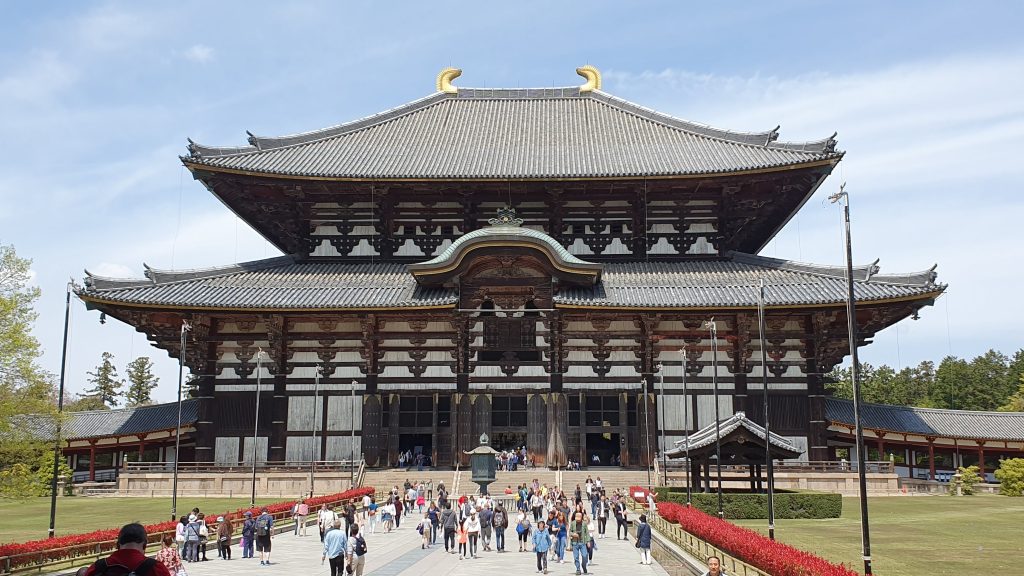
Accommodation when visit Japan
We based ourselves in Tokyo and Kyoto, taking day trips from each city. Tokyo is the largest city in the world, so you’ll need several days to explore it properly. Focus on one district per day. When arriving in Tokyo, we recommend staying centrally. Here are some areas to consider:
- Shinjuku: A lively business and entertainment district with skyscrapers, department stores, restaurants, and bars. It’s also home to Tokyo’s busiest train station.
- Shibuya: Another bustling area, famous for one of the busiest intersections in the world, Shibuya Crossing. You’ll also find plenty of shops, restaurants, and nightlife here. We stayed in Shibuya at the Sakura Fleur Aoyama Hotel when we first arrived in Tokyo.
Other hotel options in or close to Shibuya in various price ranges:- The Knot Tokyo Shinjuku: Functional rooms, a suite and a bakery in a trendy hotel with views of Shinjuku Central Park. Price: about $126 per night.
- Hotel Lotus Shibuya: Air conditioning and central heating are provided for a comfortable climate in the rooms. Price: about $95 per night.
- BOOK AND BED TOKYO Shinjuku: The rooms feature air conditioning, central heating and a fan. The rooms have a double bed. Price: about $68 per night.
- Ginza: An upscale area known for its luxury boutiques, high-end restaurants, and art galleries. We stayed at Hotel Unizo Ginza-itchome when we returned from Kyoto.
- Asakusa: A historic district where Tokyo’s oldest temple, Sensō-ji Temple, is located. You’ll find traditional Japanese souvenirs and food here.
We recently discovered Klook, which has some great deals on hotels and other activities!
In Kyoto, we recommend staying centrally with easy access to transportation. We stayed about 400 meters from the train station at Piece Hostel Kyoto. It was a simple hotel, but its proximity to the train station made it easy to take day trips to other cities and explore Kyoto by bike. If you have the budget and interest, we recommend staying at least one night in a traditional Japanese inn, called a Ryokan. We had a lovely experience at Yamazaki Ryokan.
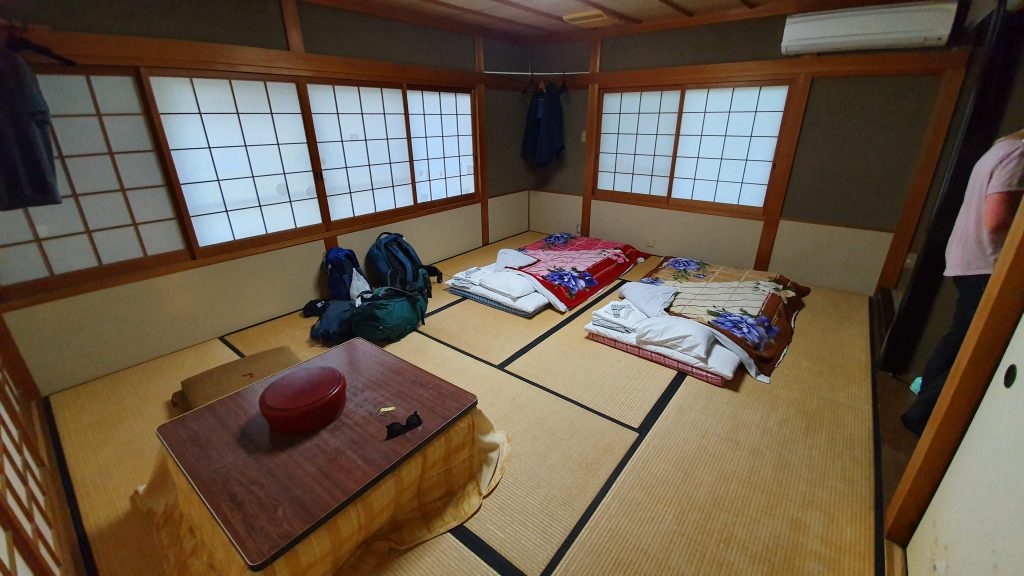
Other options in Kyoto neat the train station:
- Kyoto Tower Hotel: Air conditioning and central heating are available for a pleasant climate in the rooms. Price: about €89 per night.
- Richmond Hotel Premier Kyōto Ekimae: Air conditioning and central heating are available for a pleasant climate in the rooms. Price: about €98 per night.
- Dormy Inn Premium Kyoto Ekimae: Air conditioning and central heating are provided for a comfortable climate in the rooms. Price: about €125 per night.
Deals from Klook, great deals on hotels and other activities!
Transportation
As a tourist, you can purchase a special train pass called the Japan Rail Pass (JR Pass). This pass is only valid for tourists and must be purchased before you arrive Japan. Depending on the duration of your pass, you can travel freely on the Shinkansen (bullet train) and other JR lines (except for the subway).
You’ll need to reserve tickets for the Shinkansen a day in advance, but we had no trouble doing this at the train station. You can choose between a pass for second or first class. Second class offers free seating, while first class provides assigned seats. If you follow this itinerary, you’ll need a 7-day Japan Rail Pass.
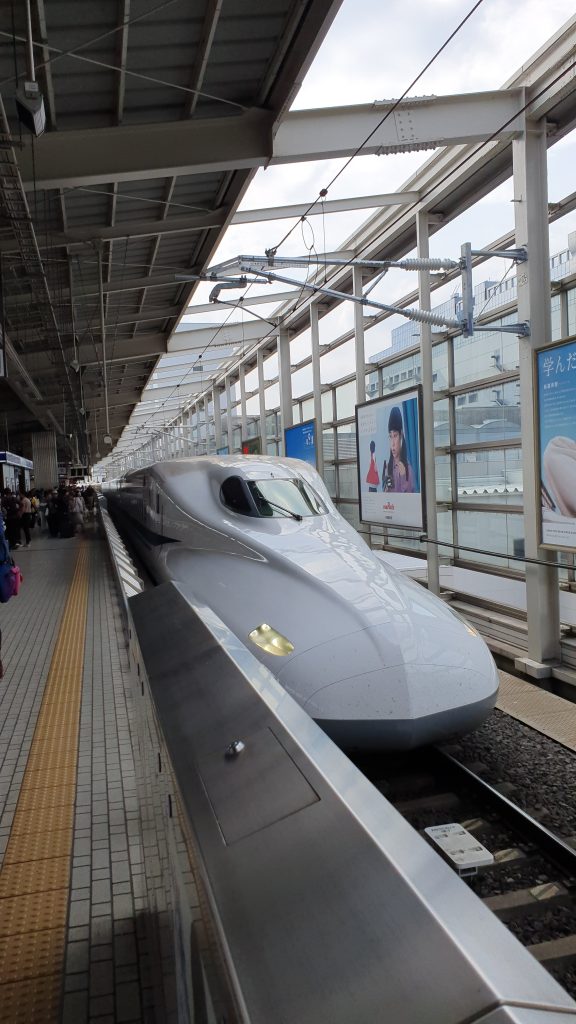
Price:
- 7-day Standard Class: approximately 33,000 yen (approximately 218 USD)
- 7-day First Class: 70,000 yen (approximately 521 USD)
Website: JAPAN RAIL PASS
Map
Packing tips when you visit Japan
Pack light and smart when you visit Japan! It is a modern country with great shopping, so you don’t need to bring everything from home. Focus on comfortable clothes that can be layered, and don’t forget a good pair of walking shoes. A light rain jacket and an umbrella are good to have on hand, as is a warm sweater for chilly evenings. See our recommended gear that we use HERE.
Don’t forget essentials like your passport, visa (if needed), travel insurance, and Japan Rail Pass if you plan to travel a lot by train. A good power bank can be useful for charging your phone on long days out.
Download a translation app and learn some basic Japanese phrases – it’s always appreciated by the locals. Nowadays, you don’t need to buy a SIM card when you arrive in a new country; get an e-sim instead. You pay directly through the app and then install it on your mobile phone. Very convenient!
We have used and recommend iRoamly
Detailed Itinerary for you visit to Japan
Day 1: Arrival
Take the train from the airport to central Tokyo and your hotel. Depending on your arrival time, explore the area around your accommodation. Due to the seven-hour time difference between Sweden and Japan, we focused on adjusting to the jet lag and strolled around the streets near our hotel in Shibuya. We were amazed by the vending machines everywhere – on every street and at almost every house – selling drinks and snacks.
Check out some tours for Tokyo here:
Day 2: Western Tokyo
Tokyo is enormous, and we started our exploration with the western, modern part of the city. We had a packed itinerary and planned to wake up early, but jet lag got the better of us, and we slept through all our alarms, waking up at 11 am! It didn’t matter though; we still managed to see and do everything we wanted and got into the local rhythm.
We began the day in Shibuya, Tokyo’s most iconic district. Visit the famous Shibuya Crossing, located at Shibuya Station. It’s a massive pedestrian crossing where all directions get a green light simultaneously. Thousands of people cross the road at the same time, in all directions. Grab a coffee at Starbucks to watch this spectacle from above, it is a really cool thing to see when you visit Japan!
Next, take a walk down Takeshita Street, a lively shopping street full of trendy fashion and pop culture.
Then, head to the more tranquil Meiji Shrine, a beautiful Shinto shrine surrounded by a peaceful park. Stroll through Shinjuku Gyoen National Garden and enjoy the cherry blossoms in bloom (during spring). Buy some food or snacks and have a picnic in the park. You’ll see many locals doing the same. Pick up some sushi from Seven Eleven and eat it in a park – we promise it’s tastier than the sushi back home!
Go up the Tokyo Metropolitan Government Building for free panoramic views of the city from the 45th floor. Spend the evening in Shinjuku, Tokyo’s busiest and most vibrant district. You’ll find numerous restaurants, bars, shops, and arcades here. We also visited the Samurai Museum to learn more about Japan’s samurai culture.
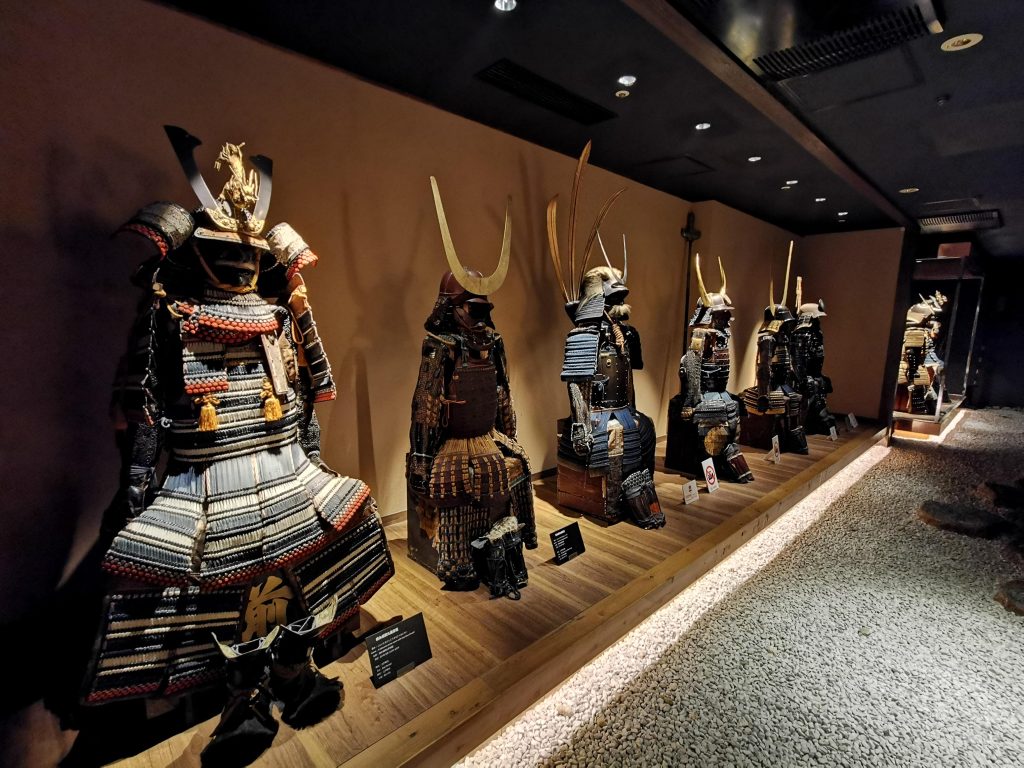
Day 3: Eastern Tokyo
Explore the eastern, more traditional part of Tokyo. We started the day at Asakusa and Sensoji Temple, Tokyo’s oldest temple. The Kaminarimon Gate with its red lantern is said to be one of Tokyo’s most photographed landmarks. The lantern symbolizes not only thunder but also enlightenment and protection. It is believed to protect the temple and its visitors from misfortune (we haven’t had any accidents since our visit!).
Next, we headed to the Tokyo Skytree, the tallest structure in Japan. We recommend buying tickets in advance to guarantee your spot and get a possible discount. Ascend 634 meters into the air and be amazed by the panoramic view and the sheer size of Tokyo. We were fascinated by how the city seemed to stretch endlessly, with buildings continuing beyond the horizon.
Book now with a discount!
Klook.com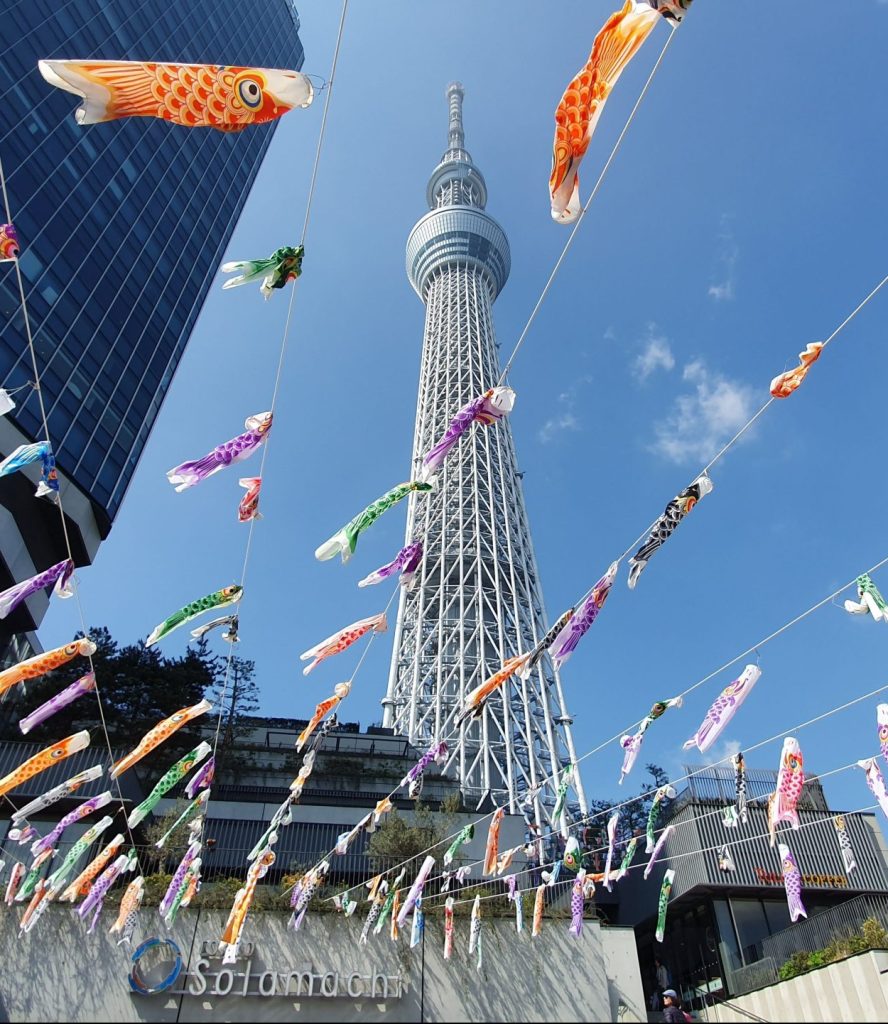
After that we did as the locals do, bought some sushi, and sat down in Sumida Park for a picnic while watching the turtles sunbathing at Hyotan pond. We spent the afternoon in the Akihabara district, a mix of electronics stores and anime cafes. End the day with a unique experience at an arcade or, if you’re more of an animal lover, a hedgehog cafe like Chiku Chiku Cafe.
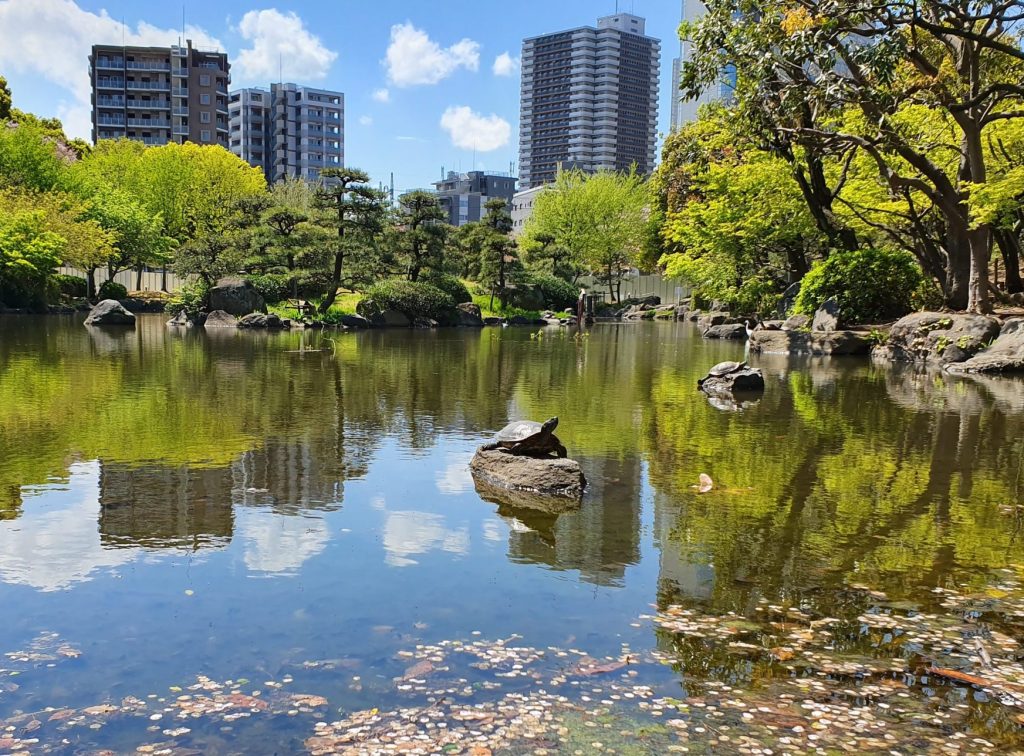
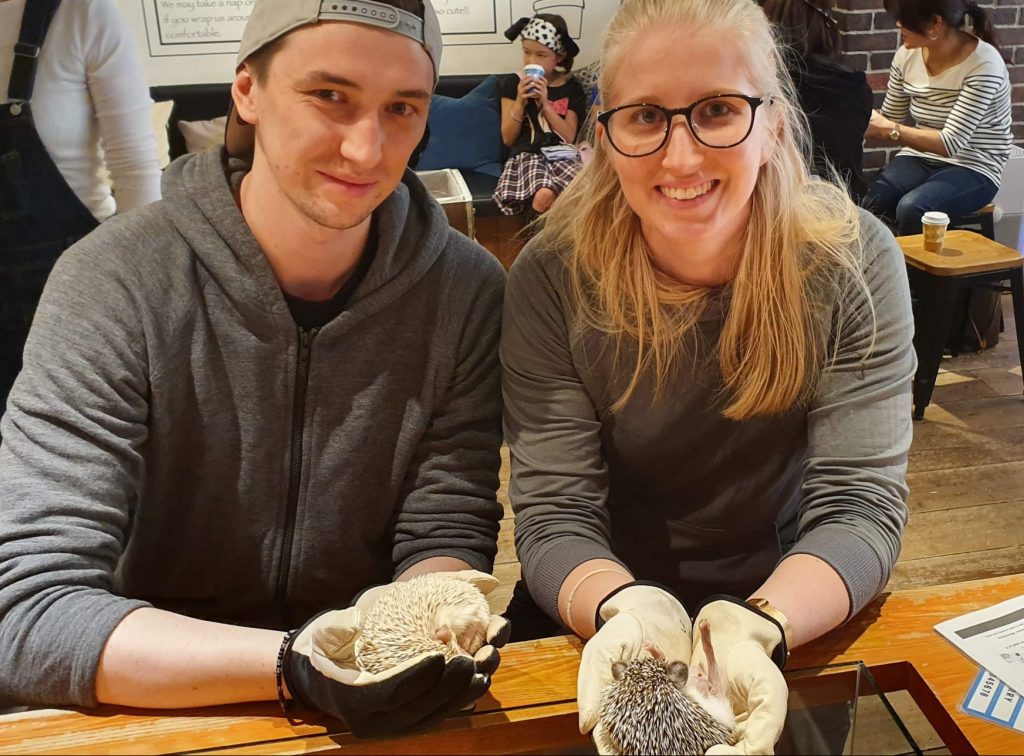
Day 4: Tokyo Day Trip
Activate your JR Pass and embark on a day trip from Tokyo. There are several options to choose from. For example, you can visit Kamakura, a city south of Tokyo with a giant Buddha statue and numerous temples, or Nikko, north of Tokyo, known for its beautiful nature. We opted for Hakone and Mount Fuji. We recommend this day trip only if the weather is clear and sunny when you visit Japan.
Check out some 1 day tours from Tokyo here:
Take the train to Odawara Station and transfer to a smaller train that will take you up to Gora Station. There, we purchased separate round-trip tickets for the Hakone sightseeing loop. We started with the Hakone Ropeway, a cable car, ascending to Togendai Station. The view of Mount Fuji was stunning! We then took a pirate ship across Lake Ashi. A bit touristy for our taste, but the views from the lake were beautiful! On the other side of the lake, we enjoyed a leisurely stroll through Onshi-Hakone Park. Don’t miss the Hakone Shrine by the lake, which makes for a picturesque photo with Mount Fuji in the background.
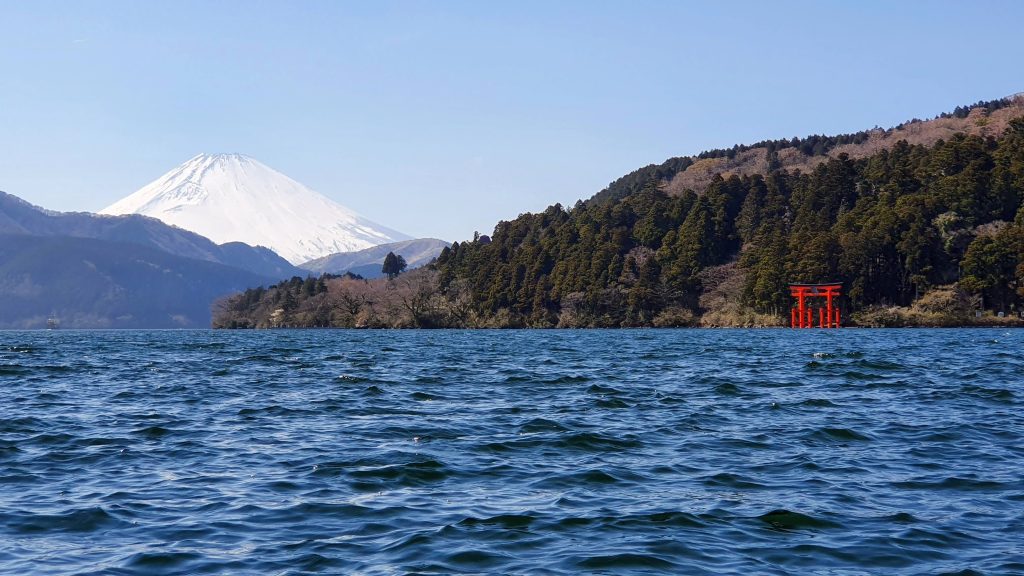
Next, take the bus back to Gora Station. Don’t miss the sculpture park in Gora before heading back. There’s a glassblowing studio there, and if there’s one thing we regret, it’s not buying a glass sculpture (we still think about it today!). Finally, take the small train from Gora Station back to Odawara Station and then back to Tokyo. Don’t forget to reserve your train tickets for the next day when you return to Tokyo.
Day 5: Kyoto
Start your day by catching an early morning train around 7:00-7:30 am to Kyoto. Since our hotel didn’t include breakfast, we bought breakfast to eat on the train. Upon arriving in Kyoto, we stored our luggage in the lockers at the train station to save time and check in to the hotel later.
Take the local train to the Arashiyama area and start by visiting the Site of Danrin-ji Temple. From there, walk to the enchanting Bamboo Forest, which is the highlight of this temple. A short walk from there is Monkey Park Iwatayama. We started at the bamboo forest to catch a glimpse of it before the crowds arrived. Then, hike up to the top of Monkey Park Iwatayama to see and feed the monkeys that live freely on the mountain. We’re not usually fans of tourist attractions involving animals, but here, it’s the humans who enter cages on the mountain to feed the monkeys that come to us. You can buy bags of fruit or nuts to feed the monkeys on site.
Next, we made our way to the Golden Pavilion, Kinkaku-ji. This golden palace, reflected in the water, is probably one of the most magnificent sights we’ve ever seen. We also tried a traditional matcha and sesame ice cream, which we had heard was a must-try.
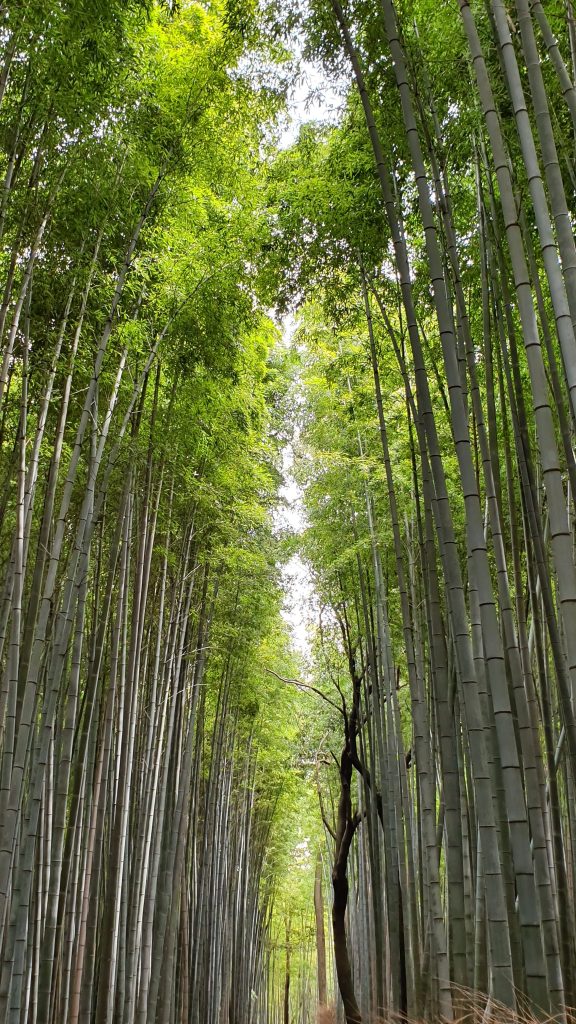
After that we took the bus back to Kyoto Station to retrieve our luggage and check in to our accommodation. We spent the evening exploring the area around our hotel on foot.
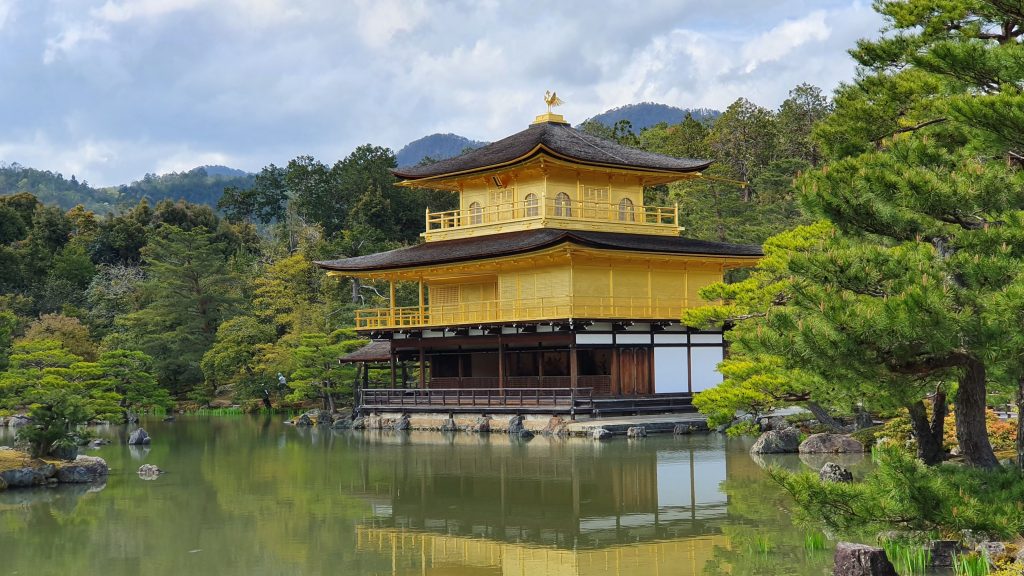
Day 6: Nara and Osaka
Take a morning train to Nara, primarily known for the tame deer in Nara Park. Stroll through the park while interacting with the wild but tame deer and visit some of the park’s temples. If you like, you can buy special crackers to feed the deer. If you’re lucky, they’ll bow to you as a thank you. We could have spent a whole day here, but don’t linger too long in Nara.
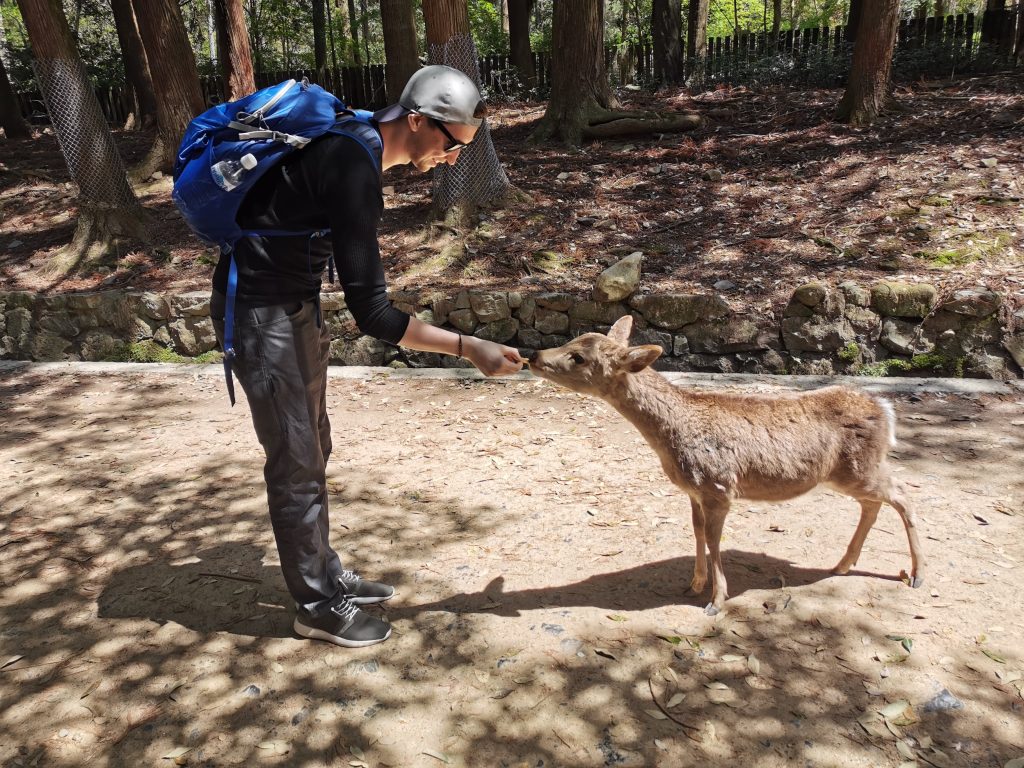
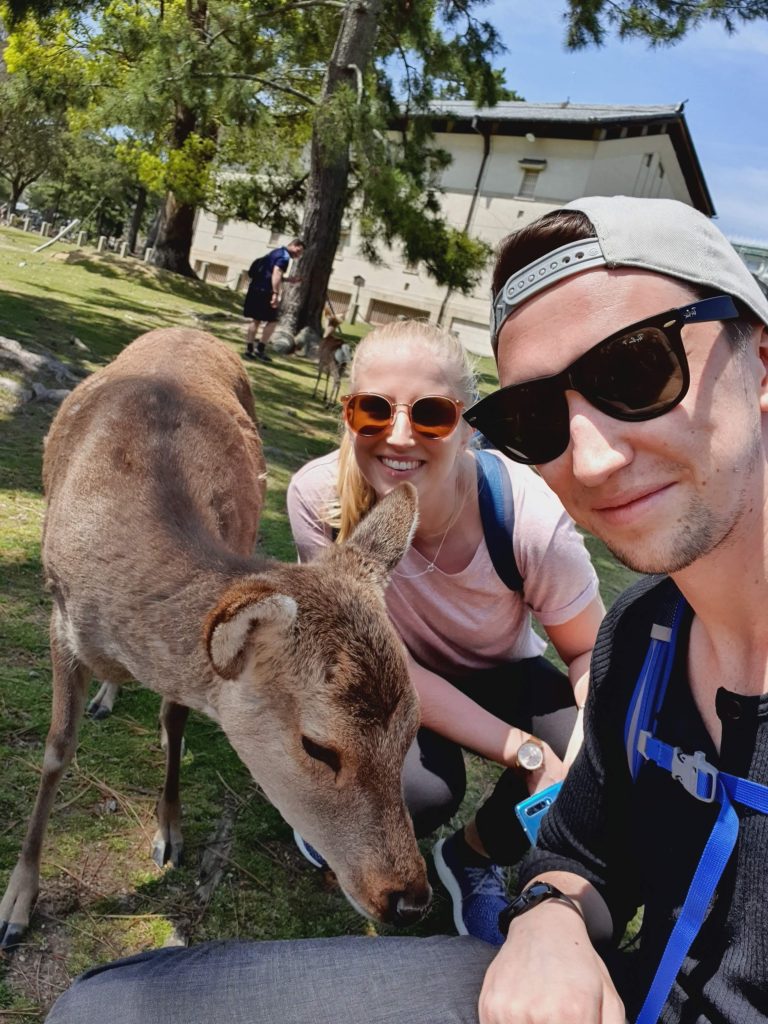
We had Okonomiyaki for lunch in Nara before taking the train to Osaka to spend the rest of the day and evening there.
Osaka is a vibrant metropolis with a rich history and a modern feel. We started by visiting Osaka Castle and then strolled along Shinsaibashi-Suji Shopping Street. The street is filled with shops, restaurants, and local street food stalls. Don’t miss walking along the Dotonbori canal to see the neon lights from all the quirky signs on the buildings reflected in the water, especially stunning after dark, a must see when you visit Japan!
Osaka is known for its cuisine, so trying the delicacy Kobe beef is a must. Many restaurants require reservations, and we were very lucky to get a table at Tsurugyu restaurant without one.
Then take the train back to Kyoto, which takes about an hour. If you have more than 10 days in Japan, we recommend staying one or two nights in Osaka.
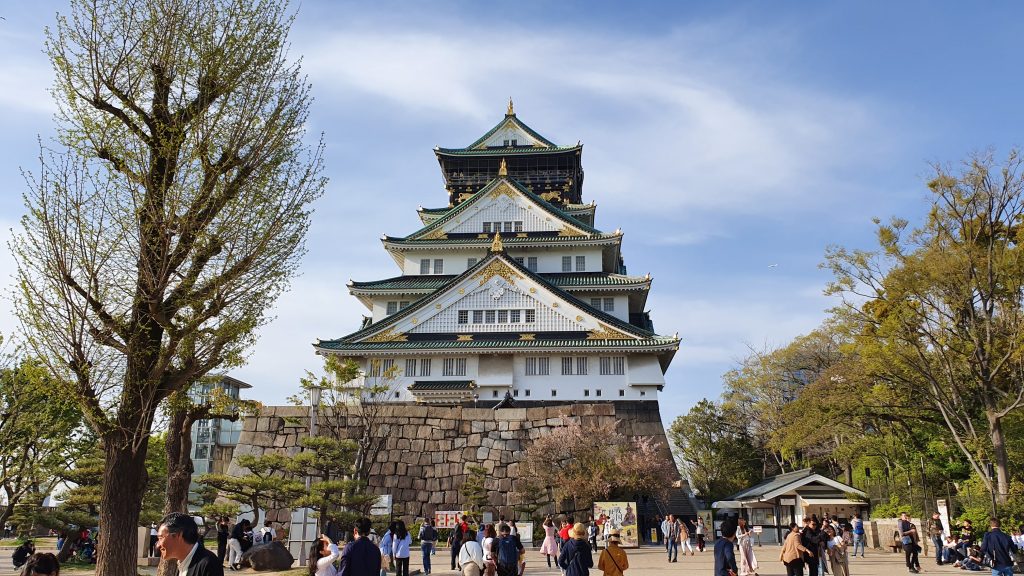
Day 7: Day Trip to Miyajima and Hiroshima
Hop on an early morning train and head towards Miyajima Island. When you arrive by train at Miyajimaguchi Station, walk down to the harbor and board a ferry that will take you to the island. The main attraction is the mesmerizing floating Torii Gate. It’s like something out of a fairy tale! Depending on the tide, you can even walk out and stand right under the gate – a must for all photography enthusiasts.
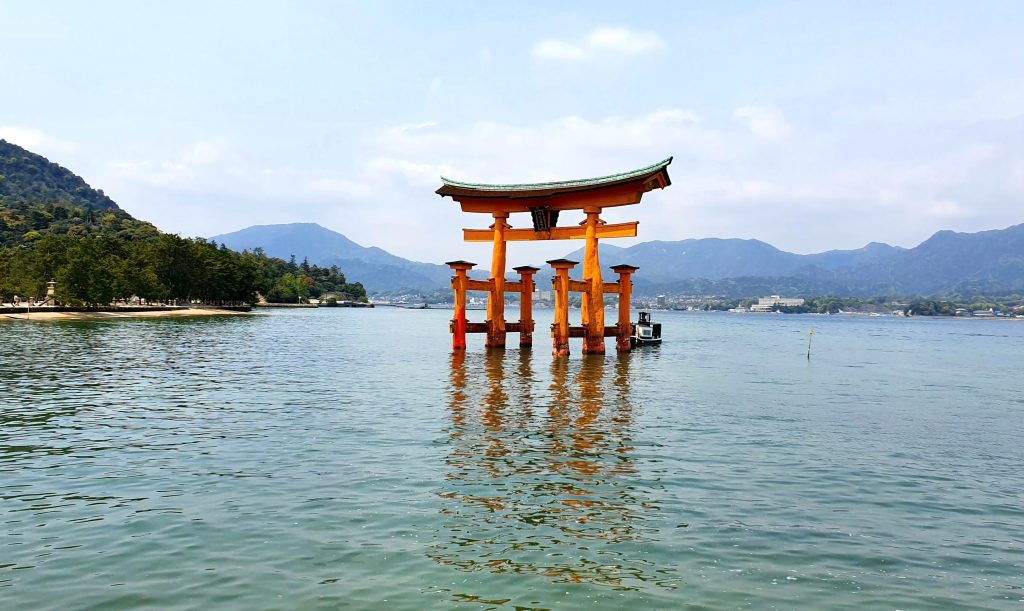
There’s more to see and do on the island, including hiking in the mountains, visiting temples, or taking a boat trip. It’s also recommended to try fresh oysters here, which Japan is known for.
If you have more days, you can spend the whole day on the island, but we continued to Hiroshima. To see the best of the city, hop on a hop-on hop-off bus, which is included in the JR Pass. It’s a convenient way to get around, and you can hop on and off at any attractions that interest you. Don’t miss the Peace Memorial, a moving monument to peace, and the Children’s Peace Monument, a thought-provoking memorial you need to see when you visit Japan. Visit the Hiroshima Peace Memorial Museum and take a moment to reflect on history and enjoy the beautiful Flame of Peace. Don’t forget to visit Hiroshima Castle, built in 1590, destroyed by the atomic bomb, and now rebuilt.
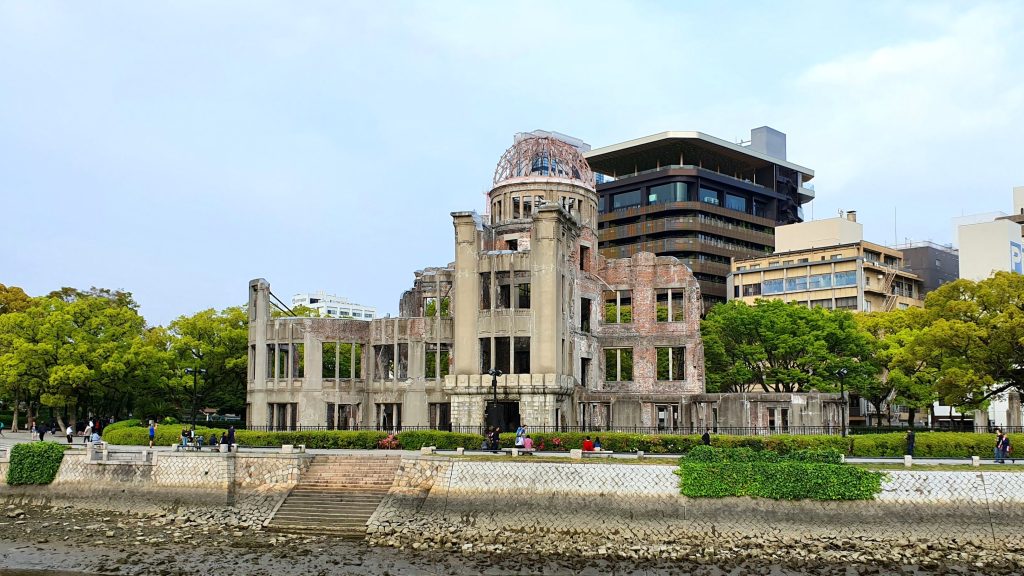
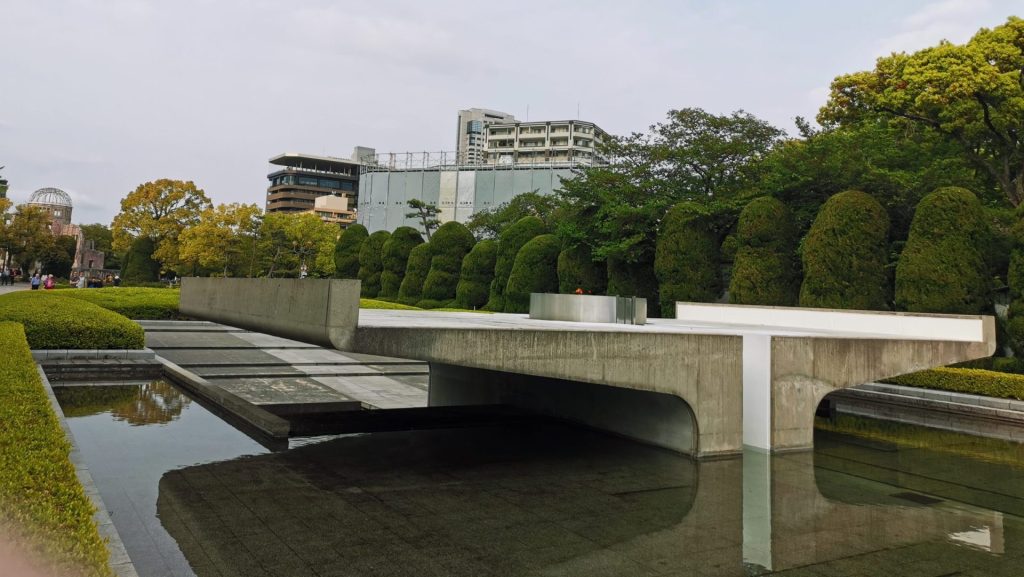
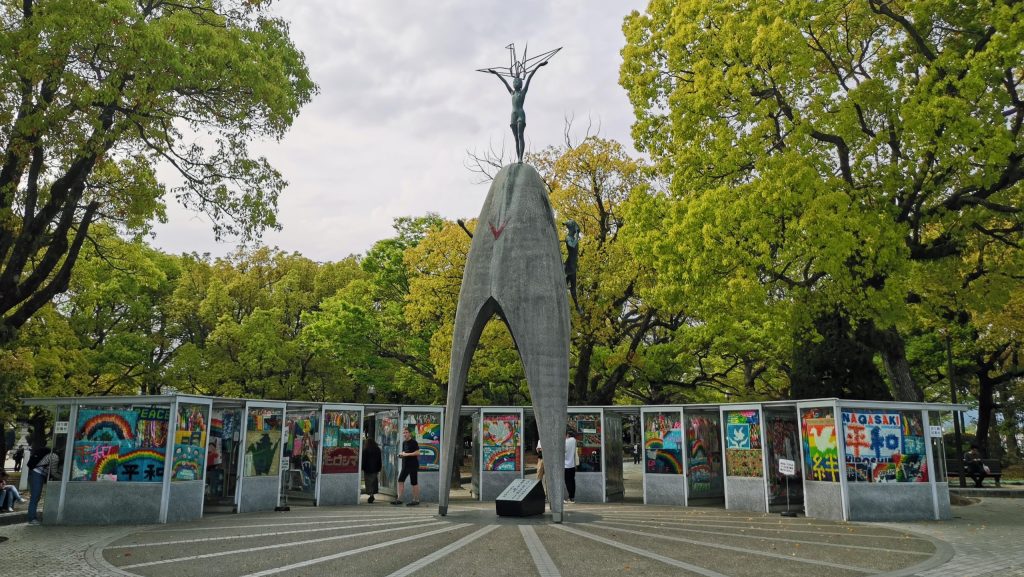
Day 8: Kyoto
After a few intense and busy days, this day is a bit more relaxed, spent in Kyoto. Start the day with a walk through Gion, Kyoto’s famous geisha district. Stroll along the narrow streets and admire the well-preserved wooden buildings. With a bit of luck, you might catch a glimpse of a geisha on her way to an appointment.
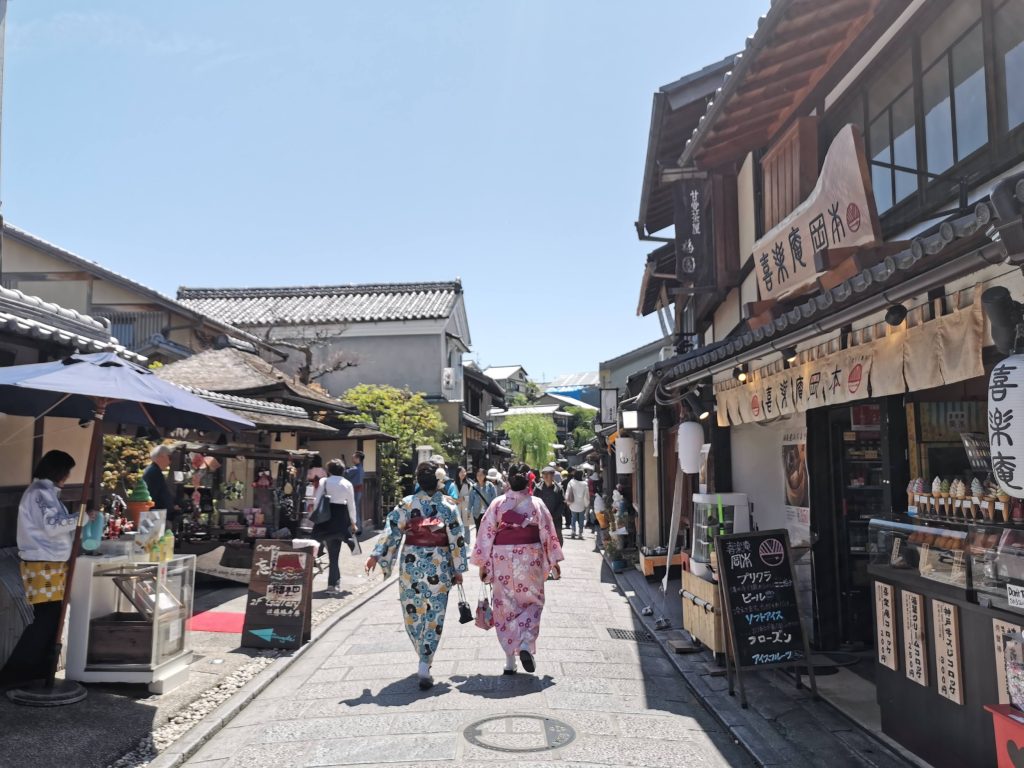
Continue to Sannenzaka, a charming and lively pedestrian street filled with traditional shops and cafes. Here you can find unique souvenirs and try local delicacies.
Don’t miss strolling through Nishiki Market, a market selling local food and delicacies.
Explore the Higashiyama district, known for its beautiful temples and gardens.
Visit Nijo Castle, built during the Edo period as a palace for Japan’s military leader. The castle is known for its beautiful architecture, impressive gardens, and intricate details. One of the castle’s most famous features is the so-called “nightingale floor.” This is a floor that creaks when walked upon, which is said to have been designed to warn the shogun of intruders.
Check out some tours for Kyoto here:
Enjoy a traditional Japanese experience by checking out of your hotel and staying in a Ryokan. The tranquil atmosphere and beautiful gardens will give you a taste of authentic Japanese hospitality.
Day 9: Kyoto and Afternoon Train to Tokyo
Start the day by leaving your luggage at the train station and renting a bike to easily get around Kyoto. Cycle to Fushimi Inari-taisha, where thousands of red torii gates wind their way up the mountain. It’s an amazing and unique experience to walk through this tunnel of gates.
Then cycle to Kiyomizu-dera, a UNESCO World Heritage Site with a beautiful temple offering stunning views of the city. Admire the impressive wooden veranda that juts out over the valley.
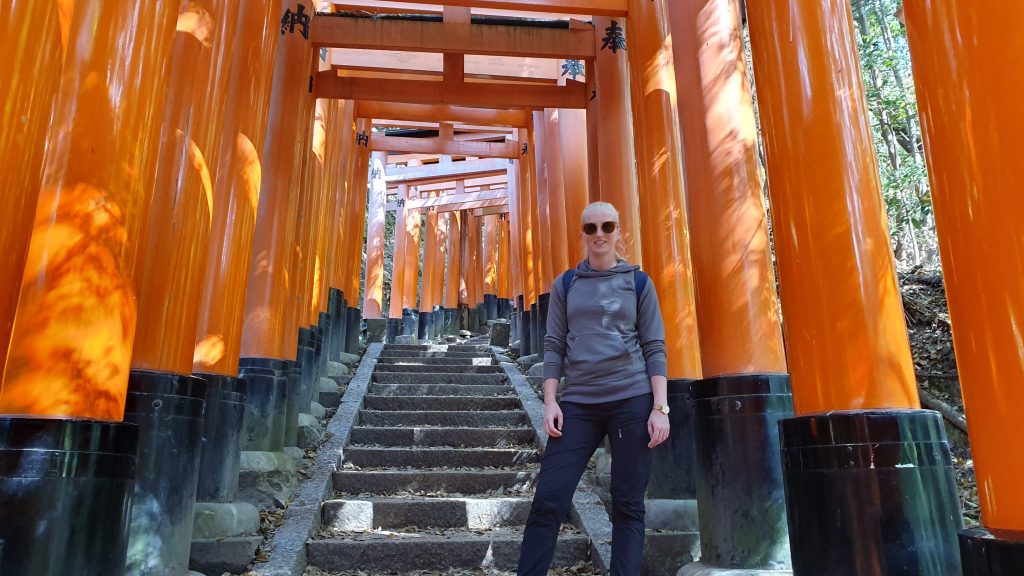
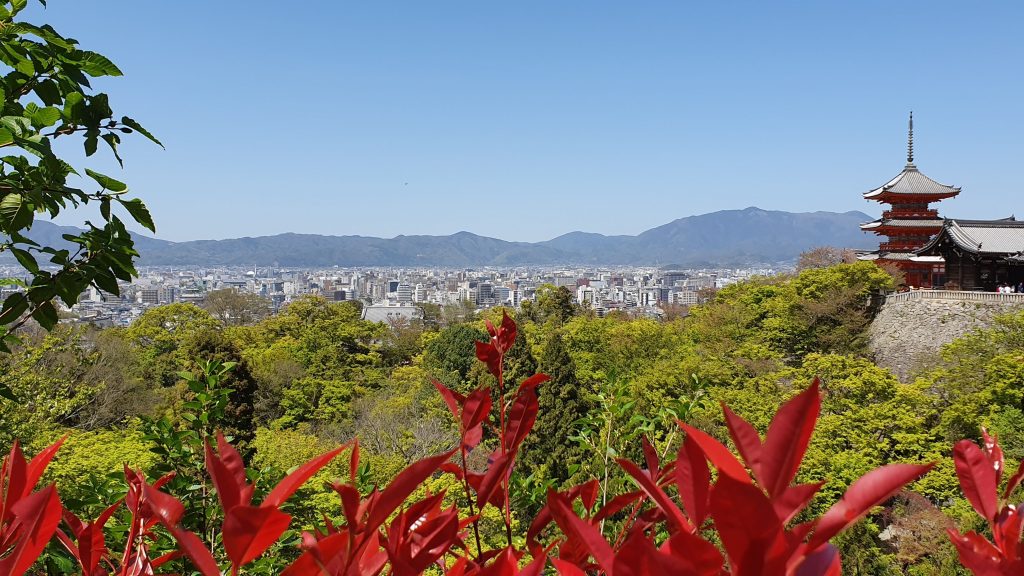
Continue with a relaxing bike ride along the Philosopher’s Path, a peaceful walkway where you can enjoy nature and perhaps meet some locals. The cherry blossoms bloom beautifully here in spring, and in autumn, the leaves glow gold and red.
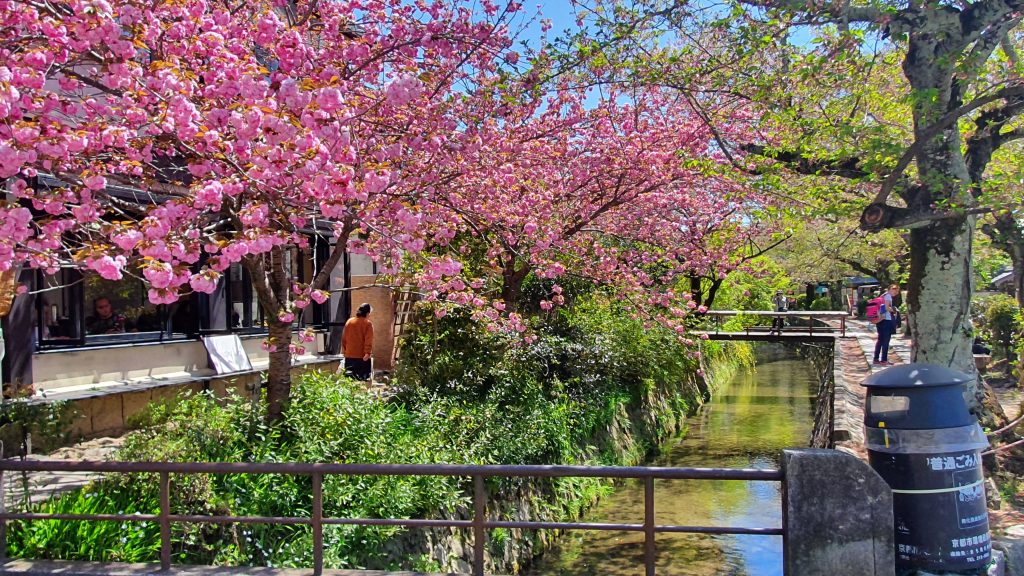
Then take an afternoon train back to Tokyo and catch any last sights or experiences you wish to have. We took the opportunity to experience a magical world of interactive digital art at TeamLab Planets.
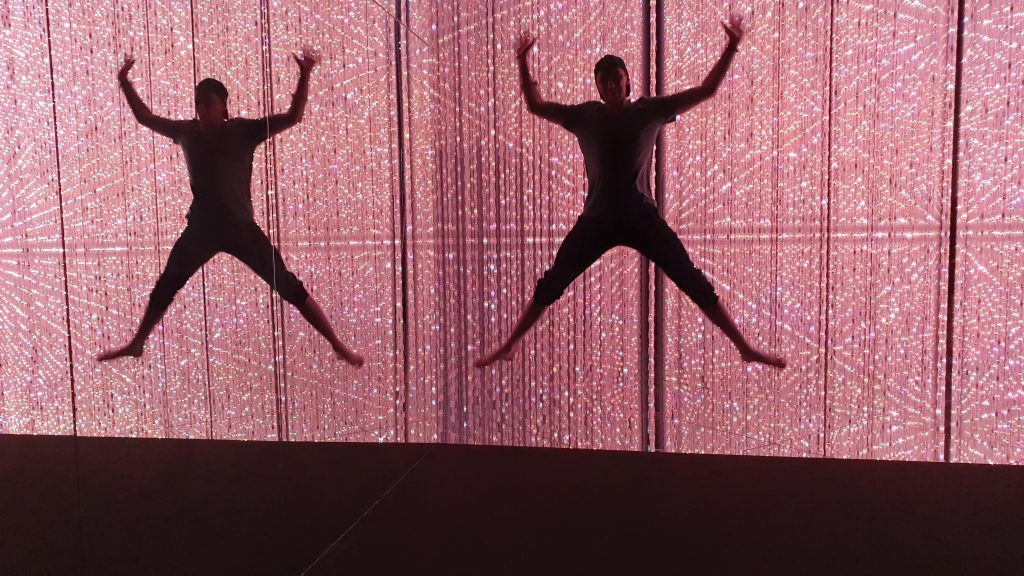
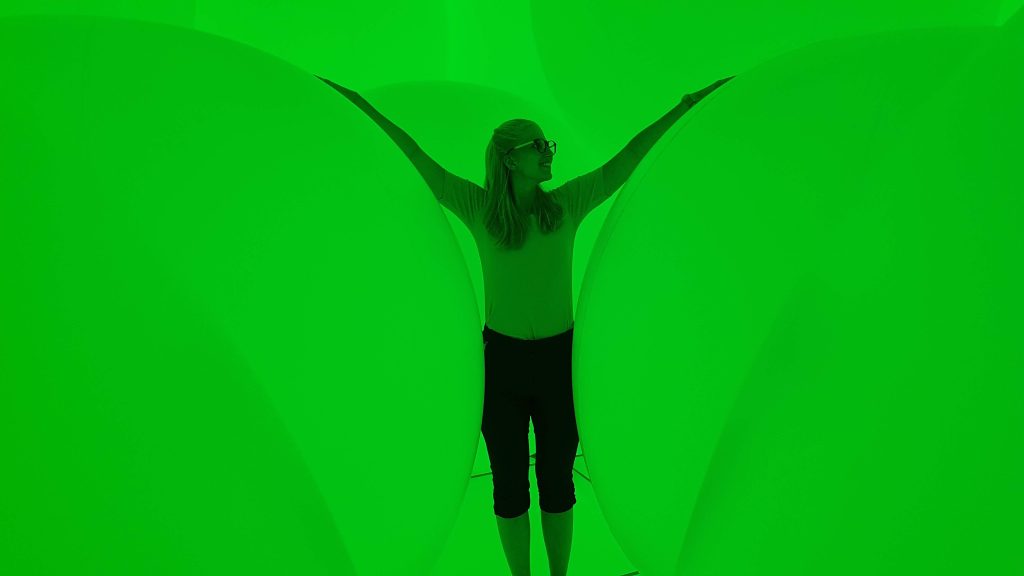
Day 10: Tokyo and Departure
Get up early and visit the famous Tsukiji Central Fish Market. Here’s a chance to enjoy the freshest sushi, straight from the ocean to your plate.
The flavors are outstanding, and the memories of this meal will last a lifetime. This is among the tastiest and freshest we have ever eaten! The market opens early, so it’s perfectly fine to have sushi for breakfast.
Depending on your flight departure time, you can do some last-minute shopping in the Ginza district. Besides Uniqlo and Muji, our favorite store is Tokyo Hands, which has just about everything. Then utilize your JR Pass for a comfortable journey to the airport.
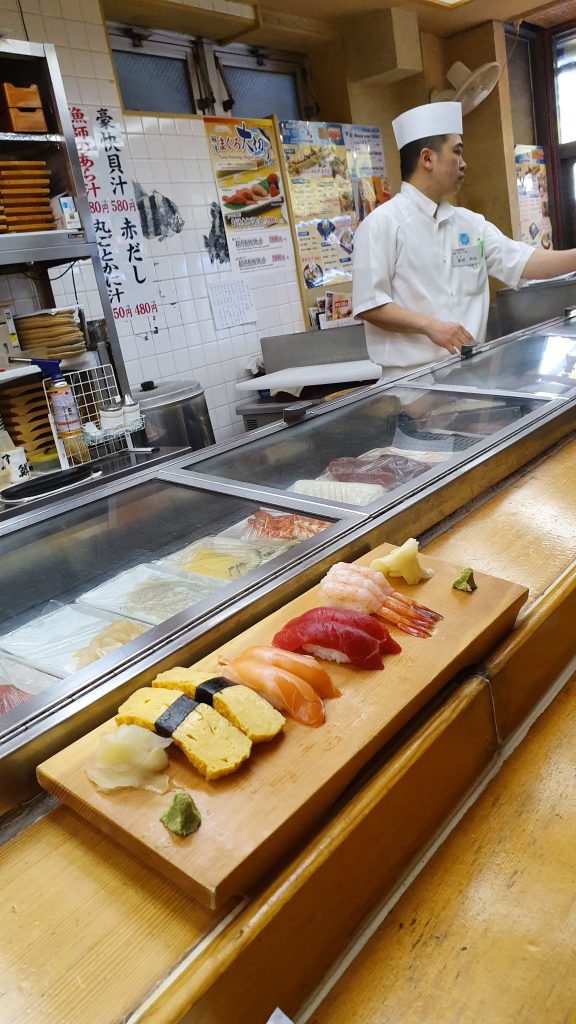
Outro
As we boarded our flight back home, we couldn’t help but feel a tinge of sadness leaving Japan behind. But the memories we made – from navigating the Shibuya Crossing to witnessing the serenity of the Fushimi Inari Shrine – will stay with us forever. Visit Japan exceeded our expectations in every way, and we can’t wait to return one day to explore even more of this captivating country. We hope our experiences and tips inspire you to embark on your own Japanese adventure! Don’t forget to try all the amazing food (seriously, the sushi is life-changing!) and embrace the unique culture that makes Japan so special.
If you want even more details about your destination, we really love guide books from Lonely Planet! Click on the link, banner or use code “JESPEREDMAN10” in the checkout to get 10% off the price!

- eSIM Plans for Travelers:
For easy and fast connectivity for your devices, we recommend an eSIM from iRoamly

Youtube video for inspiration when you visit Japan
Check out our travel film from when we visit Japan – get inspired for your own adventure when you travel in Japan!
Thanks for reading! We spend a lot of time on these posts, so if you enjoyed it, feel free to buy us a coffee!

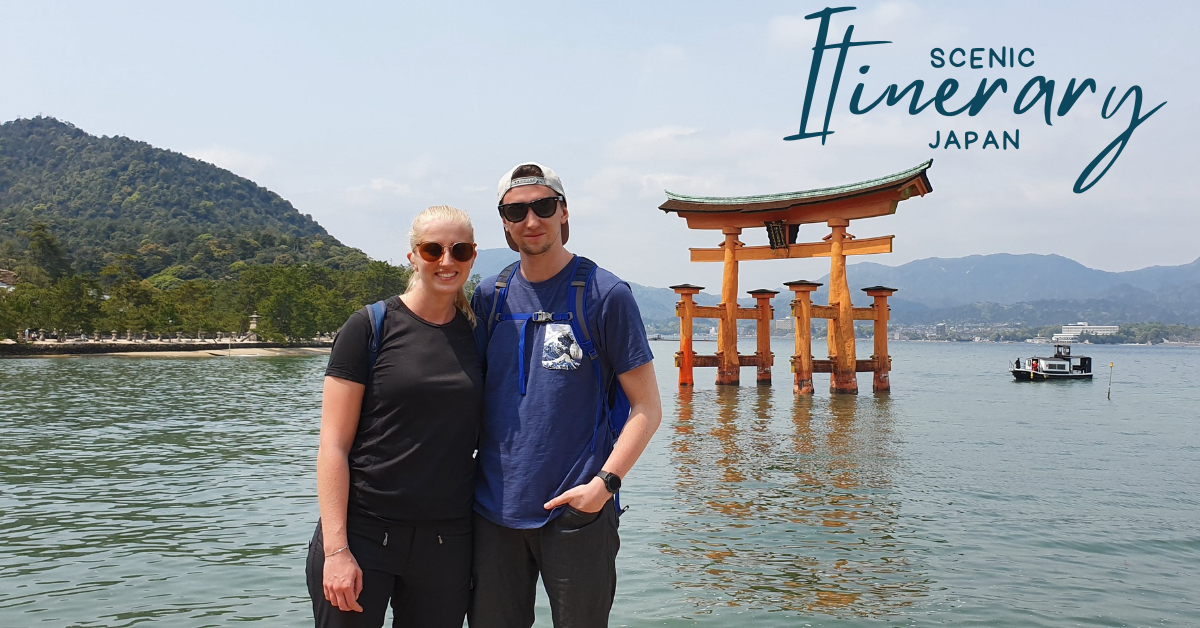










Leave a Reply